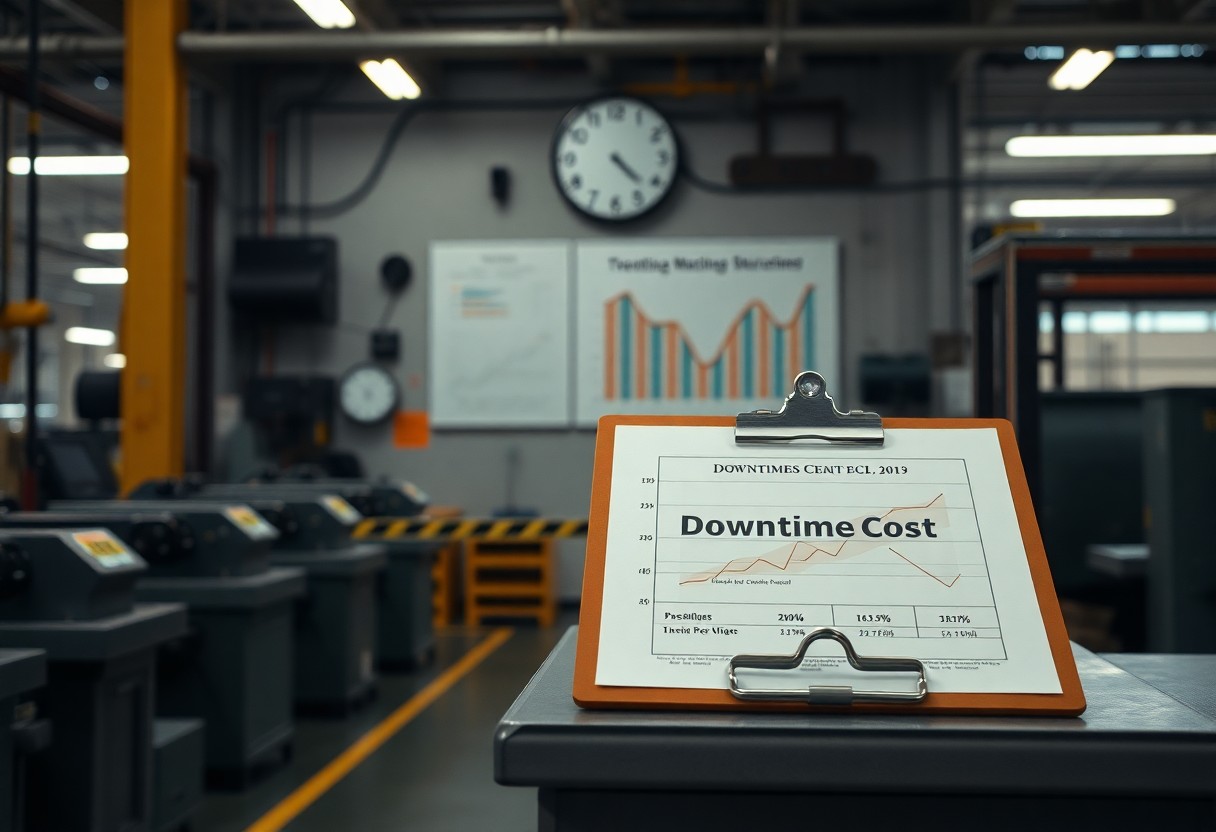What Is Endpoint Protection And Why It’s Critical For Cyber Security
You need to understand that endpoint protection is a vital component of your cyber security strategy. This technology...

You may not realize it, but downtime can significantly impact your business’s profitability. Every hour of lost productivity can lead to missed revenue opportunities, strained customer relationships, and increased operational costs. In a competitive landscape, understanding the full financial implications of interruptions is vital for protecting your bottom line. By addressing the factors contributing to downtime, you can improve efficiency and ultimately enhance your financial performance. It’s time to take a closer look at how downtime affects you and your business.

Downtime is the period when your systems, machinery, or processes are inoperative, leading to lost productivity and potential revenue. Recognizing the different types of downtime can help you implement strategies to minimize their impact and enhance operational efficiency.
Downtime can be classified into several categories, including:
| Unplanned Downtime | Sudden failures or incidents causing immediate stoppage. |
| Planned Downtime | Scheduled maintenance or upgrades that temporarily halt operations. |
| Operational Downtime | Delays related to processes or workflows not functioning as intended. |
| System Downtime | Complete shutdown of IT systems preventing access to data and applications. |
| Equipment Downtime | Breakdowns or inefficiencies in machinery leading to lost production hours. |
This classification helps pinpoint specific areas for improvement in your systems and processes.
Several factors contribute to downtime, ranging from mechanical failures to human errors. Understanding these causes enables you to address vulnerabilities before they escalate.
Common causes of downtime include equipment malfunctions, software bugs, inadequate maintenance, and employee mishaps. For instance, statistics show that around 20% of downtime is due to hardware failures, while software-related issues account for approximately 30%. Additionally, human factors such as operator mistakes or insufficient training can lead to significant interruptions. By identifying these causes, you can develop targeted strategies to reduce their likelihood, thereby safeguarding your productivity and revenue.

Downtime can have far-reaching effects on your business’s economic health. Unexpected outages not only lead to immediate revenue loss but also erode customer trust and brand reputation. For an in-depth exploration of these consequences, refer to The Cost of Downtime: Outages, Brownouts & Your Bottom ….
Every minute of downtime translates into substantial financial losses. Businesses can lose thousands of dollars per hour as sales decline and operations grind to a halt. For example, companies like Amazon estimate a cost of around $99,000 per minute during outages, highlighting the severe impact on your bottom line.
Beyond immediate losses, downtime brings indirect costs that can linger for months or years. You may experience reduced productivity, higher operational costs, and lost customers, which ultimately affects your long-term profitability.
These indirect costs often include increased labor expenses as employees face overtime to catch up on delayed tasks. Additionally, customer dissatisfaction can lead to churn, with clients seeking more reliable alternatives. The reputational damage from outages can also mean a prolonged loss of trust, resulting in lower sales and a diminished market position.
Downtime impacts various industries differently, creating unique challenges and costs. In manufacturing, production halts can lead to significant revenue loss and damaged reputations. The Alarming Cost of Downtime in Modern Manufacturing highlights this issue, linking downtime directly to decreased productivity and profit margins. The service sector also suffers, as businesses depend on consistent operations to meet customer demands and maintain satisfaction.
In manufacturing, every minute of downtime significantly impacts output and profit. For example, the average industrial facility loses approximately $260,000 per hour in productivity due to unscheduled downtime. Furthermore, equipment failures not only delay production but also lead to increased maintenance costs, making downtime a critical concern for manufacturers aiming to stay competitive.
Service sector businesses face the challenge of maintaining swift, reliable services. A retail store losing connectivity for even a few hours can miss out on thousands in sales, while service-based companies may struggle with client retention during downtimes. Such interruptions can damage customer trust, leading to long-term financial ramifications.
In the service sector, lost service time can also translate into high opportunity costs. For instance, a call center that experiences a system outage loses not just immediate revenue but potentially countless customer interactions that affect brand loyalty. Each minute of downtime increases frustration for customers and employees alike, highlighting the need for robust contingency plans and fail-safes to mitigate these risks.
Understanding how downtime impacts productivity enables you to make informed decisions to improve operational efficiency. Evaluating lost hours against your team’s output reveals potential gaps. For example, if your team experiences an average of 10 hours of downtime per week, and each hour costs $100 in lost productivity, the total loss amounts to $1,000 weekly. By quantifying these losses, you can prioritize solutions that directly enhance your bottom line.
Key performance indicators (KPIs) are important for identifying downtime’s impact. Metrics such as Overall Equipment Effectiveness (OEE), mean time to repair (MTTR), and lost production hours provide measurable data to assess productivity losses. For instance, a decrease in OEE can signal excessive downtime, prompting immediate corrective action.
Employing effective tools can streamline downtime monitoring and analysis. Software solutions like IoT sensors, EAM systems, and real-time dashboards facilitate tracking equipment availability and performance trends. These tools not only highlight occurrences of downtime but also assist in pinpointing their root causes, allowing for targeted interventions.
Specific tools, such as remote monitoring systems, can provide alerts on equipment malfunctions before they escalate into significant downtime. For example, deploying an IoT-based solution can notify you of erratic performance patterns, enabling preemptive maintenance. Additionally, performance dashboards offer visual insights into operational trends, helping you to quickly identify and address productivity bottlenecks. Companies utilizing such tools report up to a 20% increase in productivity following effective downtime management.

Implementing effective strategies is important for reducing downtime and safeguarding your bottom line. The True Cost Of Downtime (And How To Avoid It) outlines various approaches you can adopt to maintain operational efficiency.
Establishing a schedule for preventive maintenance can significantly decrease the likelihood of unexpected equipment failures. Regularly inspecting and servicing machinery not only extends its lifespan but also ensures optimal performance. By addressing potential issues before they escalate, you save on costly repairs and downtime.
Your team’s proficiency directly influences how swiftly you can address downtime. Prioritizing employee training ensures they possess the skills to troubleshoot problems efficiently.
Allocating resources effectively, including time and personnel, empowers employees to respond promptly to issues. A well-trained staff can identify early signs of malfunction and engage preventative measures, minimizing disruptions. Regular training sessions and drills can lead to a stronger, more agile workforce, equipped to handle operational challenges without significant delays. This investment in human capital results in smoother workflows and ultimately contributes positively to your bottom line.
Real-world examples illustrate how targeted strategies can significantly decrease downtime, enhancing overall productivity and profit margins. Here are a few notable case studies:
Company A transformed its operations by adopting IoT technology, leading to a measurable 30% reduction in downtime within six months. Smart sensors enabled real-time monitoring, allowing for proactive maintenance and swift issue resolution. As a result, the company not only saved approximately $200,000 annually but also improved equipment efficiency.
Through extensive process optimization initiatives, Company B realized a remarkable 40% decrease in operational downtime. By analyzing workflows and identifying bottlenecks, the company streamlined procedures, leading to a 25% increase in productivity. This involved retraining staff and integrating technological support, showcasing how strategic adjustments can yield substantial benefits.
Company B’s investment in process optimization also included the adoption of lean methodologies and the use of data analytics to pinpoint inefficiencies. The implementation of these changes not only enhanced workflow but also fostered a culture of continuous improvement among employees. This dual approach of optimizing processes while engaging the team resulted in sustained gains in productivity and a more resilient operational framework.
Upon reflecting, it’s clear that downtime can have a significant negative impact on your bottom line. Every moment of inactivity translates to lost revenue, decreased productivity, and potential damage to your brand reputation. Understanding how downtime affects your operations allows you to implement proactive measures to minimize disruptions. By prioritizing efficiency and investing in strategies to reduce downtime, you can safeguard your financial health and enhance overall business performance.
A: The cost of downtime varies by industry and can range from thousands to millions of dollars per hour. Factors influencing this cost include the type and duration of the downtime, loss of productivity, revenue impact, and potential damage to customer relationships.
A: Downtime can lead to delayed services or products, resulting in frustrated customers. This dissatisfaction may prompt customers to seek alternatives, negatively affecting brand loyalty and future sales.
A: Effective strategies include implementing regular maintenance schedules, investing in reliable infrastructure, utilizing backup systems, and providing adequate training for staff to quickly address issues, thereby reducing the likelihood and duration of downtime.
You need to understand that endpoint protection is a vital component of your cyber security strategy. This technology...
You rely on robust cybersecurity measures to protect your business from evolving threats, and Endpoint Detection and...